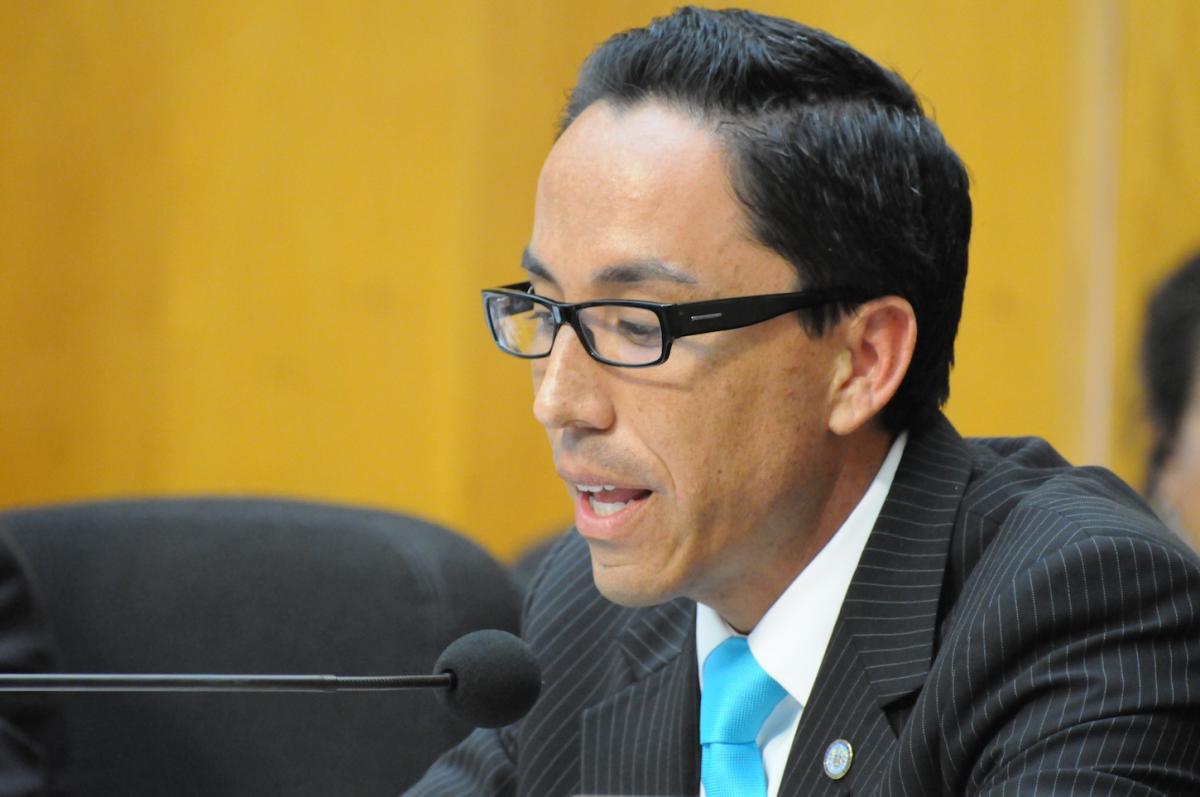Daily Business Report-July 5, 2016
Satellite image of precipitable water in clouds, Jan. 5, 2016, when an Atmospheric Rivers program helped deliver 5 inches of rain to Southern California. (Credit: Scripps Institution of Oceanography)
Governor Approves Funding for New
Program Aimed at Saving State Water
Gov. Jerry Brown has authorized the allocation of funds that will create a program proposed by a Northern California water agency that draws on climate science largely developed at Scripps Institution of Oceanography at the University of California San Diego.
The program could enable storage of billions more gallons of water in state reservoirs than is possible now. This is based on emerging science and applications related to the discovery of atmospheric rivers, which are a type of storm that is especially effective in producing California rain and snow. By employing the latest knowledge of atmospheric rivers, advancing that knowledge and creating tools and methods aimed at monitoring and predicting them, it will provide potent new information to support modern reservoir operations strategies now under development.
“I applaud the governor and the leadership in the Legislature, and especially Sen. Marty Block for their foresight and their confidence in research-driven solutions to California’s water crisis,” said Lt. Gov. Gavin Newsom, who serves as a UC regent and chair of the State Lands Commission. “Time and again, University of California faculty and researchers have discovered new scientific pathways to address seemingly insoluble trends in climate, health, and the environment. We trust that precise understanding and prediction of atmospheric rivers will be among their most fruitful discoveries.”
The Atmospheric Rivers: Research, Mitigation, and Climate Forecasting Program created in 2015 by the passage of Senate Bill 758 has the potential to make the same amount of water available to California as would the construction of dams costing billions of dollars but would do so through smarter use of existing infrastructure. And, if new reservoirs become a reality, it could enable them to be even more effective. The Sonoma County Water Agency (SCWA) has worked closely with Scripps scientists for several years to better understand atmospheric rivers, which are focused channels of moisture in the atmosphere that can deliver nearly half of the state’s water supply in relatively few strong storms annually.
_______________________________________
General Atomics Develops Giant
Capacitors to Power Electric Railguns
Times of San Diego
A General Dynamics division has successfully demonstrated giant storage capacitors that can power hundreds of shots by futuristic electromagnetic railguns.
The San Diego-based company said its new capacitors can store more than 415 kilojoules of energy, breaking a previous record by more than 20 percent.
Railguns use electromagnetism to accelerate projectiles without explosives. The Navy anticipates using railguns on its new Zumwalt class of stealth destroyers.
General Atomics said two of the new capacitors were used to successfully demonstrate 500 railgun shots in a repetitive-fire mode.
“Our ongoing research, development and maturing of high energy density capacitor technologies is enabling the creation of pulsed power systems powerful enough and compact enough to support the needs of our customers for both land and sea-based railgun applications,” said Nick Bucci, vice president of missile defense and space systems at General Atomics’ Electromagnetic Systems Group.
Bucci said the more powerful capacitors will enable General Atomics to design more compact railgun weapons.
The company has successfully fired projectiles from its Blitzer electromagnetic railgun at accelerations of over 30,000 times the force of gravity. This new capacitor will enable significantly higher muzzle energies.
Discovery Could Lead to
Better Heart Attack Treatment
By City News Service
Scientists at the La Jolla-based Sanford Burnham Prebys Medical Discovery Institute, UC San Diego and Stanford University announced a discovery that could lead to more effective treatment for heart attacks.
The research, published in Nature Communications, revealed a key control point in the formation of new blood vessels in the heart.
“We found that a protein called RBPJ serves as the master controller of genes that regulate blood vessel growth in the adult heart,” said Mark Mercola, a professor in Sanford Burnham Prebys’ Development, Aging, and Regeneration Program.
“RBPJ acts as a brake on the formation of new blood vessels,” said Mercola, also a professor of medicine at Stanford and senior author of the study. “Our findings suggest that drugs designed to block RBPJ may promote new blood supplies and improve heart attack outcomes.”
He said that someone in the U.S. has a heart attack every 34 seconds, which can lead to the death of tissue in the organ because of a restriction of blood supply — a condition called ischmia. The result is a severely reduced pumping capacity and difficulty breathing.
Such heart failure arises within five years in about a quarter of heart attack patients, the researchers said.
If the heart had an alternative blood supply, more muscle would remain intact, and function would be preserved, according to the scientists. Many researchers have been searching for ways to promote the formation of additional blood vessels in the heart.
“Studies in animals have shown that having more blood vessels in the heart reduces the damage caused by ischemic injuries, but clinical trials of previous therapies haven’t succeeded,” said Ramon Diaz-Trelles, a staff scientist at Sanford Burnham Prebys and a study author. “The likely reason they have failed is that these studies have evaluated single growth factors, but in fact building blood vessels requires the coordinated activity of numerous factors. Our data show that RBPJ controls the production of these factors in response to the demand for oxygen.”
Oceanside Gets Federal
Funds for Water Research
Times of San Diego
The city of Oceanside was awarded $35,905 from the federal government to research water reuse markets.
“The city of Oceanside is pleased to receive this much-needed funding,” said Cari Dale, water utilities director for the city. “California is a desert region and water is a precious resource we do not take for granted. This funding will help us investigate technology that could provide an additional one million gallons of potable water per day to our customers without an increase in the amount of pumping from the Mission Basin.”
With the funds, Oceanside will examine adding a third stage reverse osmosis system to the city’s Mission Basin Groundwater Purification Facility which is part of the larger San Luis Rey Valley Groundwater Basin.
By adding this system, the city hopes to recover up to 45 percent of the brine that is currently discharged into the ocean.
Research study activities will include development of a pilot test plan, installation of a reverse osmosis pilot unit at the facility and running of the pilot unit to determine whether water quality goals can be met at the desired recovery rate.
San Diego Graduate Student
To Intern at White House
By City News Service
A San Diego woman pursuing a master’s degree at Yale is one of about 170 students announced Friday as summer interns at the White House in Washington, D.C.
According to her LinkedIn profile, Emily Wier is a Francis Park School graduate who is studying environmental management at Yale. Her undergraduate work was at Tufts University in Medford, Mass.
The White House said its internship program provides a unique opportunity to gain valuable professional experience and build leadership skills.
Interns work in one of several White House departments, including the Domestic Policy Council, the National Economic Council, the Office of Cabinet Affairs, the Office of Communications, the Office of Digital Strategy, the Office of the First Lady and the Office of Legislative Affairs.
Participants in the internship program also work in the Office of Management and Administration, the Office of Political Strategy and Outreach, the Office of Presidential Correspondence, the Presidential Personnel Office, the Office of Public Engagement and Intergovernmental Affairs, the Office of Scheduling and Advance, the Office of the Vice President, the Office of the White House Counsel and the President’s Commission on White House Fellowships.



